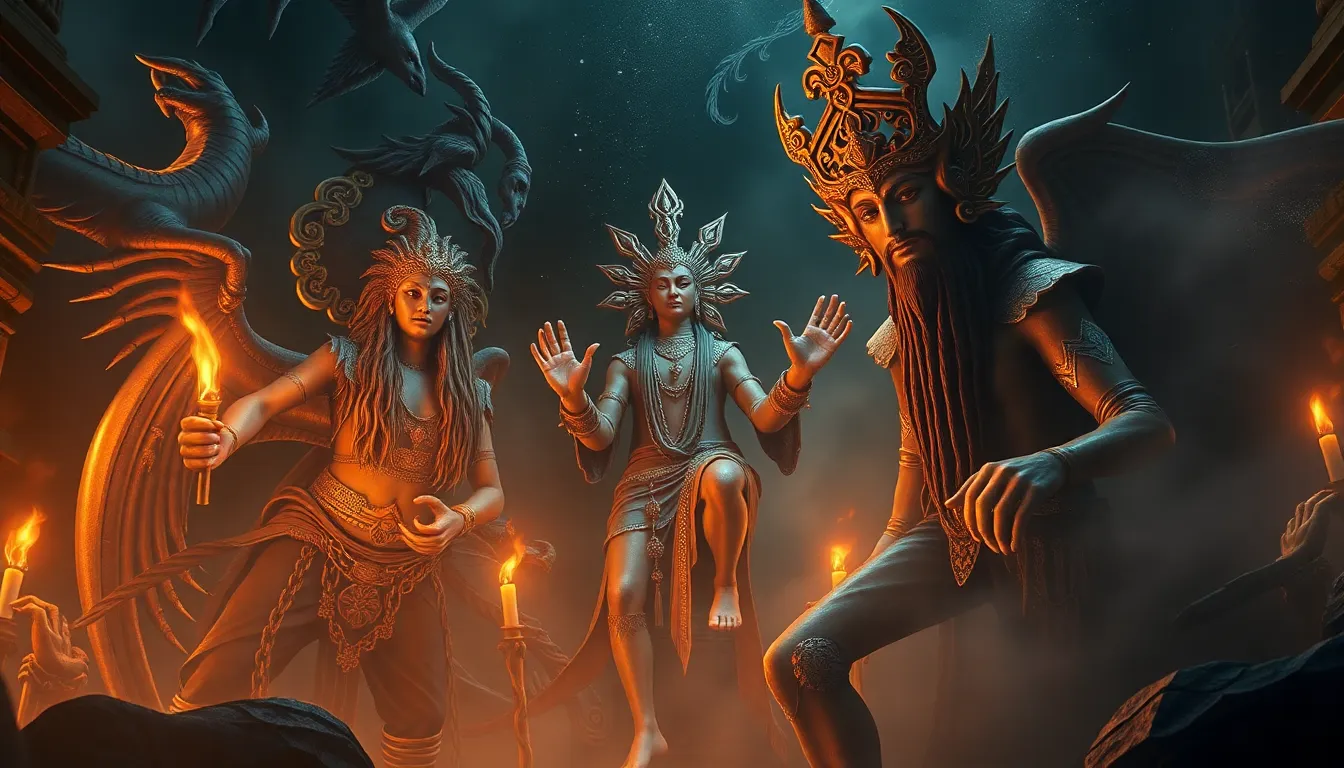How Ancient Deities Influenced Modern Religion: A Deep Dive
1. Introduction: The Enduring Legacy of Ancient Deities
The exploration of ancient deities provides a fascinating window into the evolution of religious thought and practice. These figures, often representing natural forces, human emotions, and moral ideals, laid the groundwork for many contemporary belief systems. Understanding how these ancient influences permeate modern religions is vital for grasping the complexities of faith and spirituality today.
2. The Concept of Deity in Ancient Civilizations
In ancient civilizations, deities were often seen as anthropomorphic beings with powers over specific aspects of life and nature. They were revered and feared, embodying the mysteries of existence. The characteristics of these deities varied widely across cultures:
- Mesopotamian Deities: Often associated with natural elements and city-states, gods like Marduk and Ishtar played crucial roles in creation myths and societal order.
- Egyptian Deities: With a rich pantheon, gods such as Ra and Osiris represented life, death, and the afterlife, showcasing a complex view of existence.
- Greek Deities: The Olympian gods, including Zeus and Athena, personified human traits, illustrating moral lessons through their narratives.
- Hindu Deities: Deities such as Vishnu and Shiva embody cosmic principles, with a deep philosophical context that influences millions today.
3. The Role of Mythology in Shaping Religious Practices
Mythology serves as the backbone of many ancient religions, providing rich narratives that shape cultural identity and moral frameworks. Myths were not merely stories; they were didactic tales that conveyed:
- Foundational beliefs about the cosmos and humanity’s place within it.
- Moral lessons that guided behavior and societal norms.
- Rituals that connected the divine with the mundane.
These narratives have been preserved through oral traditions and texts, continuing to influence religious practices even in modern times.
4. Borrowing and Blending: The Syncretism of Beliefs
Throughout history, religions have not developed in isolation. Syncretism, the blending of different religious beliefs, has been a common phenomenon. Some notable examples include:
- Greek Gods in Roman Religion: The Romans adopted and adapted Greek deities, renaming them and integrating their myths into Roman culture.
- Hindu Deities in Southeast Asia: As Hinduism spread, local cultures incorporated Hindu gods into their own belief systems, leading to a rich tapestry of religious practices.
This blending reflects the dynamic nature of spirituality and the human desire to find common ground in faith.
5. The Evolution of Deities: From Polytheism to Monotheism
The transition from polytheism to monotheism marks a significant shift in religious thought. Early belief systems often worshipped multiple gods, each governing different aspects of life. Over time, certain cultures began to emphasize the idea of a singular divine entity:
- Judaism: The emergence of Yahweh as the one true God redefined spiritual understanding and ethical behavior.
- Christianity: Building on Jewish monotheism, Christianity reinterpreted ancient deities and integrated them into a narrative centered on the life of Jesus Christ.
- Islam: The concept of Allah as the singular, all-powerful God further solidified the monotheistic tradition.
These transitions often involved reinterpreting the attributes and stories of ancient deities to fit new theological frameworks.
6. Iconography and Symbolism: Ancient Images in Modern Faith
Iconography plays a crucial role in religious practice, serving as a visual representation of the divine. Many symbols from ancient cultures continue to thrive in modern religions:
- The Cross: A symbol of Christianity, it has roots in earlier pagan symbols of life and death.
- Lotus Flower: In Hinduism and Buddhism, the lotus represents purity and spiritual awakening, tracing back to ancient symbols.
- Serpent: Often symbolizing wisdom and renewal, the serpent appears in various forms across multiple religions.
The persistence of these symbols highlights the continuity of spiritual themes throughout history.
7. Rituals and Ceremonies: Ancient Practices in Modern Contexts
Many modern religious rituals have their roots in ancient practices. These rituals not only reflect the beliefs of the past but also serve to connect adherents with their history:
- Festivals: Many contemporary religious festivals, such as Diwali in Hinduism or Easter in Christianity, have ancient origins linked to agricultural cycles and seasonal changes.
- Sacrifices: Ritual sacrifices, though transformed, can be traced back to ancient customs aimed at appeasing deities.
- Rites of Passage: Initiation ceremonies and life cycle events often incorporate elements from ancient traditions, symbolizing continuity and community.
8. The Influence of Ancient Texts on Religious Doctrine
Ancient scriptures have profoundly shaped modern religious doctrines. Texts such as the Epic of Gilgamesh, the Vedas, and the Bible not only contain stories of deities but also moral teachings and laws that continue to influence contemporary beliefs:
- Creation Myths: Stories of creation found in ancient texts lay foundational ideas concerning the universe and humanity’s role within it.
- Moral Codes: Ancient laws and ethical guidelines are often echoed in modern religious texts, guiding adherents’ behavior.
- Theological Discussions: The narratives surrounding ancient deities have sparked centuries of theological debate, shaping the development of religious thought.
9. Psychological and Sociological Perspectives on Deity Worship
The worship of ancient deities continues to resonate with many people today, reflecting deep psychological and sociological factors:
- Collective Memory: The shared history and stories of deities contribute to a collective identity, fostering community and continuity.
- Symbolic Representation: Deities often embody human experiences and emotions, making them relatable figures in the search for meaning.
- Spiritual Connection: Many individuals find comfort and guidance in the ancient stories of deities, using them to navigate modern challenges.
10. Conclusion: The Future of Ancient Influences in Modern Spirituality
As we explore the interplay between ancient deities and modern religion, it becomes evident that these influences are far from obsolete. The narratives, symbols, and rituals of ancient cultures continue to shape contemporary beliefs and practices. Understanding these connections not only enriches our comprehension of spirituality but also opens pathways for future religious movements. By acknowledging the enduring legacy of ancient deities, we can appreciate the complexity of faith and its evolution in our ever-changing world.



